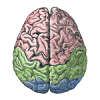1.2: Some Phenomena We'll Explore
- Page ID
- 12557
\( \newcommand{\vecs}[1]{\overset { \scriptstyle \rightharpoonup} {\mathbf{#1}} } \) \( \newcommand{\vecd}[1]{\overset{-\!-\!\rightharpoonup}{\vphantom{a}\smash {#1}}} \)\(\newcommand{\id}{\mathrm{id}}\) \( \newcommand{\Span}{\mathrm{span}}\) \( \newcommand{\kernel}{\mathrm{null}\,}\) \( \newcommand{\range}{\mathrm{range}\,}\) \( \newcommand{\RealPart}{\mathrm{Re}}\) \( \newcommand{\ImaginaryPart}{\mathrm{Im}}\) \( \newcommand{\Argument}{\mathrm{Arg}}\) \( \newcommand{\norm}[1]{\| #1 \|}\) \( \newcommand{\inner}[2]{\langle #1, #2 \rangle}\) \( \newcommand{\Span}{\mathrm{span}}\) \(\newcommand{\id}{\mathrm{id}}\) \( \newcommand{\Span}{\mathrm{span}}\) \( \newcommand{\kernel}{\mathrm{null}\,}\) \( \newcommand{\range}{\mathrm{range}\,}\) \( \newcommand{\RealPart}{\mathrm{Re}}\) \( \newcommand{\ImaginaryPart}{\mathrm{Im}}\) \( \newcommand{\Argument}{\mathrm{Arg}}\) \( \newcommand{\norm}[1]{\| #1 \|}\) \( \newcommand{\inner}[2]{\langle #1, #2 \rangle}\) \( \newcommand{\Span}{\mathrm{span}}\)\(\newcommand{\AA}{\unicode[.8,0]{x212B}}\)
Here is a list of some of the cognitive neuroscience phenomena we'll explore in Part II of the book:
- Vision: We can effortlessly recognize countless people, places, and things. Why is this so hard for robots? We will explore this issue in a network that views natural scenes (mountains, trees, etc.), and develops brain-like ways of encoding them using principles of learning.
- Attention: Where's Waldo? We'll see in a model how two visual processing pathways work together to help focus our attention in different locations in space (whether we are searching for something or just taking things in), and why damage to one of these pathways leads people to ignore half of space.
- Dopamine and Reward: Why do we get bored with things so quickly? Because our dopamine system is constantly adapting to everything we know, and only gives us rewards when something new or different occurs. We'll see how this all happens through interacting brain systems that drive phasic dopamine release.
- Episodic memory: How can damage to a small part of our brain cause amnesia? We'll see how in a model that replicates the structure of the hippocampus. This model provides insight into why the rest of the brain isn't well-suited to take on the job of forming new episodic memories.
- Reading: What causes dyslexia, and why do people who have it vary so much in their struggles with reading? We'll explore these issues in a network that learns to read and pronounce nearly 3,000 English words, and generalizes to novel nonwords (e.g., “mave” or “nust”) just like people do. We'll see why damaging the network in different ways simulates various forms of dyslexia.
- Meaning: "A rose is a rose is a rose." But how do we know what a rose is in the first place? We'll explore this through a network that “reads” every paragraph in a textbook, and acquires a surprisingly good semantic understanding by noting which words tend to be used together or in similar contexts.
- Task directed behavior: How do we stay focused on tasks that we need to get done or things that we need to pay attention to, in the face of an ever-growing number of distractions (like email, text messages, and tweets)? We'll explore this issue through a network that simulates the “executive” part of the brain, the prefrontal cortex. We will see how this area is uniquely-suited to protect us from distraction, and how this can change with age.


